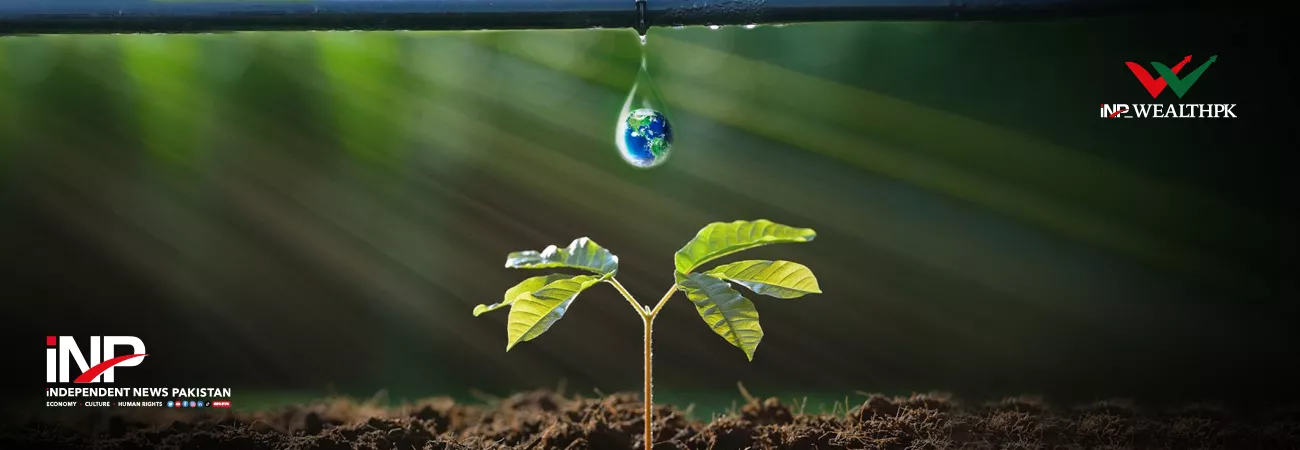INP-WealthPk
Ali Hassan
Introduction of a high-efficiency irrigation system can greatly enhance the production capacity, reduce water wastage, save energy, prevent soil erosion and drive economic growth, said Zarak Khan, Chief Executive Officer of Islamabad-based Aether Pvt (Ltd) Pakistan.
Talking to WealthPK, he said, “Pakistan often faces water shortage due to less rainfall. Our farmers resort to flood irrigation that causes wastage of huge quantities of water. A lot of water also gets wasted through evaporation, runoff, and going deep into the ground. Since water is not sufficiently available and the climate is changing, and there are more people, it's even harder to get enough water for farming.”
According to a research conducted by Pakistan Council of Research in Water Resources (PCRWR), more than 60% of water is lost during conveyance and application in the fields mainly due to the poor maintenance of the irrigation system and conventional irrigation methods.
“High-efficiency irrigation systems like drip irrigation and sprinkler irrigation help save water compared to the traditional flood irrigation. These systems feed water directly to the plant roots, so less water evaporates or flows away. This means we can use up to 50% less water while still making good use of the limited water we have,” he said.
“High-efficiency irrigation systems give the farmers better control over how they water their crops. This helps them give each crop the exact amount of water it needs. When crops get the right amount of water, they grow better and produce more. These systems also guide the farmers to use fertilizers and pesticides right where the plants need them, so they can absorb nutrients better without polluting the water,” Zarak added.
According to another research by Pakistan Council of Research in Water Resources (PCRWR), availability of water through a high-efficiency irrigation system (HEIS) has enabled farmers to increase manifold the yield of vegetables and fruits and earn hefty profits.
It is estimated that the net profit increased from 57.90% to 585% per acre annually after the introduction of drip irrigation system. If we calculate the cumulative income from both crops and vegetables in the first year of intervention, there is an increase of about 700% per acre on average as shown in the table below.

Comparison between Barani and Drip Irrigation systems
“The traditional practice of flood irrigation needs a lot of energy to pump water out and distribute it, but a high-efficiency irrigation system uses less pressure and energy, saving a lot of power. This not only helps the farmers save money, but also makes farming more sustainable by reducing pollution from carbon emissions,” he said.
“Flood irrigation causes problems like soil erosion, waterlogging, and salinization, which make the soil unhealthy and less fertile. But a high-efficiency irrigation system helps prevent these issues. It feeds water in a controlled way and only where it's needed. This prevents soil erosion and waterlogging. This system also ensures that the soil retains enough moisture for plants [to grow well] and stays in good condition,” Zarak added.
According to the PCRWR report titled “Salt affected soil and their reclamation”, the negative impact of waterlogging and salinity on the productivity of an agricultural land is very severe.
According to an estimate, as the water table decreases to within 5 feet, the yield of all major crops begins to decrease within one foot of water depth. The reduction in yield is 2 percent for cotton, 9 percent for sugarcane and 2 percent for wheat. A reduction of about 25 percent has been estimated in the production of major crops.
The government can boost the use of high-efficiency irrigation system by providing incentives, tax credits, grants, and low-interest loans to the farmers so that that they can enhance the productivity,” Zarak suggested.
Credit : Independent News Pakistan-WealthPk




